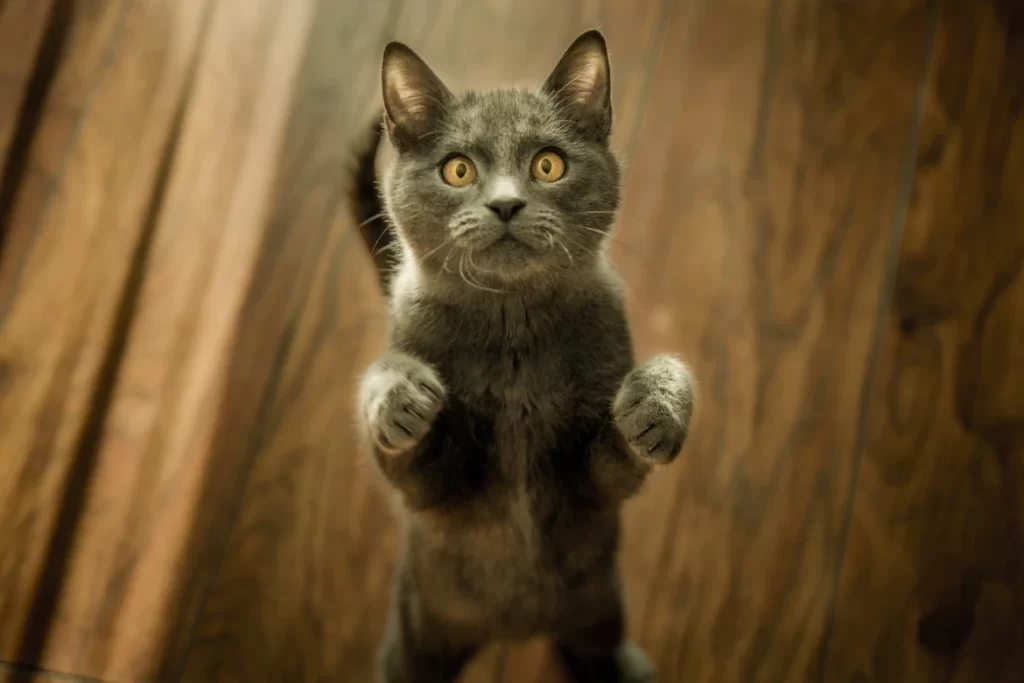Last updated on January 27th, 2023 at 04:28 am

Declawing cats has for a long time been a very sensitive issue. Some cat owners believe that it is a good move because it helps to prevent the cat from scratching them and damaging their furniture while others strongly oppose it because it affects the cat’s health and well-being. If you are considering having your cat declawed or if your vet has suggested it and you want to know the fact before you make a decision, then you have come to the right place. There are so many myths, misinformation, and misunderstandings about cat declawing. In this article, we will debunk all myths by discussing 10 facts about declawing cats.
[toc]What Exactly Is A Cat Declawing?
Before we tell you facts about declawing cats, let us first discuss what cat declawing means. Contrary to what many people think, cat declawing is not about trimming the cat’s claws. Instead, it is the surgical removal of the claws that adhere closely to the bone.
Formally known as onychectomy, this surgical procedure is done to remove the claws and also prevent their regrowth. Declawing is often compared to amputation because it involves the removal of the entire first joint of the cat’s toes or the knuckle of a cat’s toes to ensure the claws don’t grow again. Cat declawing surgery also involves the removal of the entire nail bed. The result is your cat having smaller feet with no claws.
Because declawing is a surgical process, it requires the use of general anesthesia. The recovery period of the cat can take up to three weeks. If the cat gets any complications during the surgical process, the recovery process may take even longer.
Facts About Declawing Cats
1. Declawing is a surgical procedure
If you are considering having your cat declawed, then it is important to note that it is a surgical process that requires the administration of general anesthesia which also comes with its own risks. Declawing a cat is similar to cutting off the last knuckle at each finger on a human hand. It is not a simple trimming of a cat’s claws, it is a complex process that involves removing the whole bone, including the tendons and ligaments. Considering the fact that the cat has five claws on each paw, declawing your cat means performing 10 separate amputations.
2. A declawed cat should never be left outside
Another fact about cat declawing is that once this process is done, your cat should never be left outside. This is because your cat will be completely defenseless. Cats need their claws for several reasons, the most important one is protection from other predators. So, if they are removed, then they should not be allowed to go outside because they cannot defend themselves. Additionally, they cannot climb trees to escape danger. For protection purposes, you should not allow your cat to leave the house.
3. Declawing is a very painful procedure
Another fact about declawing is that it is a very painful procedure. As mentioned earlier, a cat has 5 claws on each paw meaning 10 surgical amputations will be conducted. It is a very painful surgery with multiple health risks like nerve damage, infections, and bleeding. And if the process is not conducted right, the cat develops arthritis or be in constant pain. So, think twice before you declaw your cat because you will subject her to a lot of pain.
4. Declawing is illegal in most counties
Declawing has been banned in over 42 countries and not performed in most of the remaining countries. In fact, declawing is not practiced in most European countries, including Germany, Switzerland, and Germany.
In 2018, VCA Canada banned declawing and the same was done by VCA US in 2020. Banfield Pet Hospitals has also banned declawing. Seven provinces in Canada have banned declawing and, in the US, this surgical procedure is banned in two states: New York (2109) and Maryland 2022).
Many cities in the US, including San Francisco, Los Angeles, Austin, and Madison have also banned declawing. The list of places where declawing is illegal is growing by the day. The reason why many countries and cities have banned this surgical procedure is that they term it cruel and unnecessary amputation.
5. It may take up to 3 weeks for your cat to heal
Although it may look like a simple procedure, declawing is actually a very complicated surgical procedure that takes up to 3 weeks for your cat to heal if everything goes well. If your feline develops complications, then the healing period may even be longer.
6. Your cat may avoid the litter box entirely
Declawed toe stubs are usually very painful for weeks after the surgery. Your cat may also experience phantom limb pain her entire life. Most litter boxes are usually very painful to the tender paws of the cat. As a result, your cat may avoid the litter box entirely even after healing because it will always associate it with pain.
7. Declawing a cat maker her very aggressive
Another thing that most people probably don’t know is that declawed cats are usually very aggressive. Claws are the primary line of defense of a feline against other cats, dogs, snakes, and humans. So, if your cat does not have claws, she may turn to bite for warning and self-defense. The cat will not hesitate to bite if someone crosses the red line. Your cat will also become very aggressive because she knows she is exposed.
8. Most cat owners declaw their cats thinking they will never be destructive
Most cat owners choose to have their cat paws declawed with the belief that they will never again deal with their destructive behavior like scratching and fabric damage. However, that is not usually the case. While your cat will not scratch or damage the fabric again because she does not have claws, she may turn to bite, which is even more lethal. Paw sensitivity resulting from this surgical operation may also result in litter box biting and destructive chewing. Declawing your cat will fix two problems and create three more.
9. Declawing is a cruel procedure
There is nothing good about declawing because it solves very few problems which can be solved with other safer alternatives like nail trimming and behavioral training. Declawing a cat subjects the cat to immense pain and misery for the rest of her life. The cruelty of this procedure is evident when the cat wakes up from general anesthesia after the brutal surgery. The feline will be bouncing off from her recovery cage because of the immense pain. The cat will be in a state of helplessness, immobilized, and sad because of the excruciating pain. It is indeed a cruel behavior that no feline should go through.
10. Declawing cripples the cat
When your cat is declawed, her biomechanics (how she moves) is altered. If you are an experienced cat owner, then you probably know how slick and stealthy cat movements are. This is because cats usually walk on the tip of their toes which utilizes many musculature structures to enhance their movement. So, when you declaw your feline, she is left with numerous lacerations on the tendons joining the fingertips to her forearms. As a result, the cat will not be able to utilize her muscles properly. She will be forced to transfer weight from the fingers to the palm. Her paws will become less coordinated and her higher muscle groups will be stretched beyond their normal capacity, making it difficult for her to walk normally.
Final Thoughts
If you were considering declawing your feline, we hope that these facts about declawing cats have made you change your mind. Declawing is a brutal procedure that subjects the cat to excruciating pain. Declawing your cat will also affect her personality. Your cat will become more aggressive, unfriendly, and destructive.
The America Animal Hospital Association is opposed to the declawing of domestic cats unless the cat’s claws present a significant health risk to people in the household. The American Association of Feline Practitioners also strongly opposes declawing. A growing number of veterinarians are also refusing to perform this cruel surgical procedure.
Instead of declawing your feline, you can use other alternatives to tame your cat’s scratching behavior. Some of these alternatives include nail trimming, training, using furniture covers to protect your furniture, use of Feliway, and gluing soft paws on your feline claws. These humane alternatives will fix the problem without hurting the cat.


